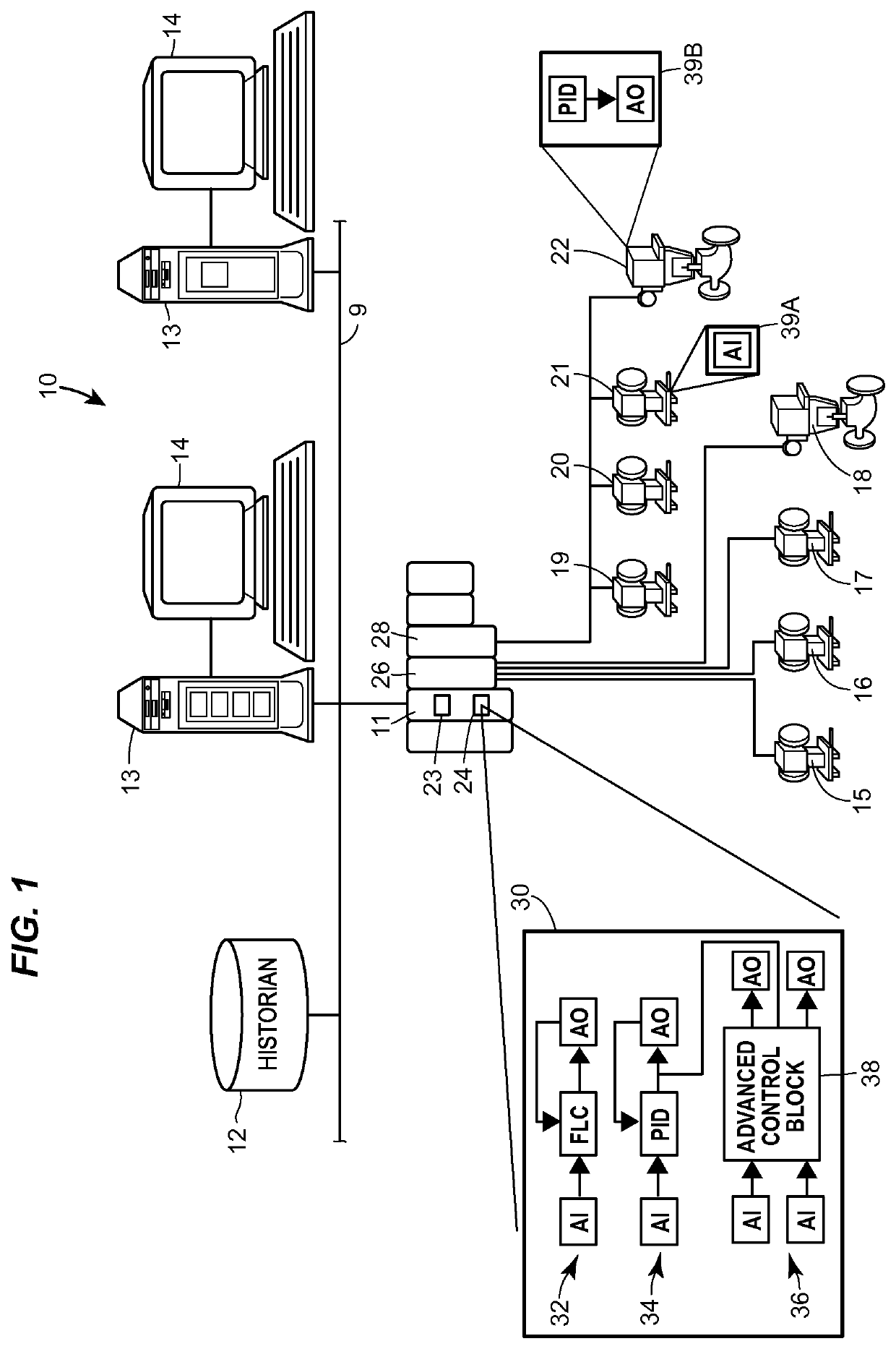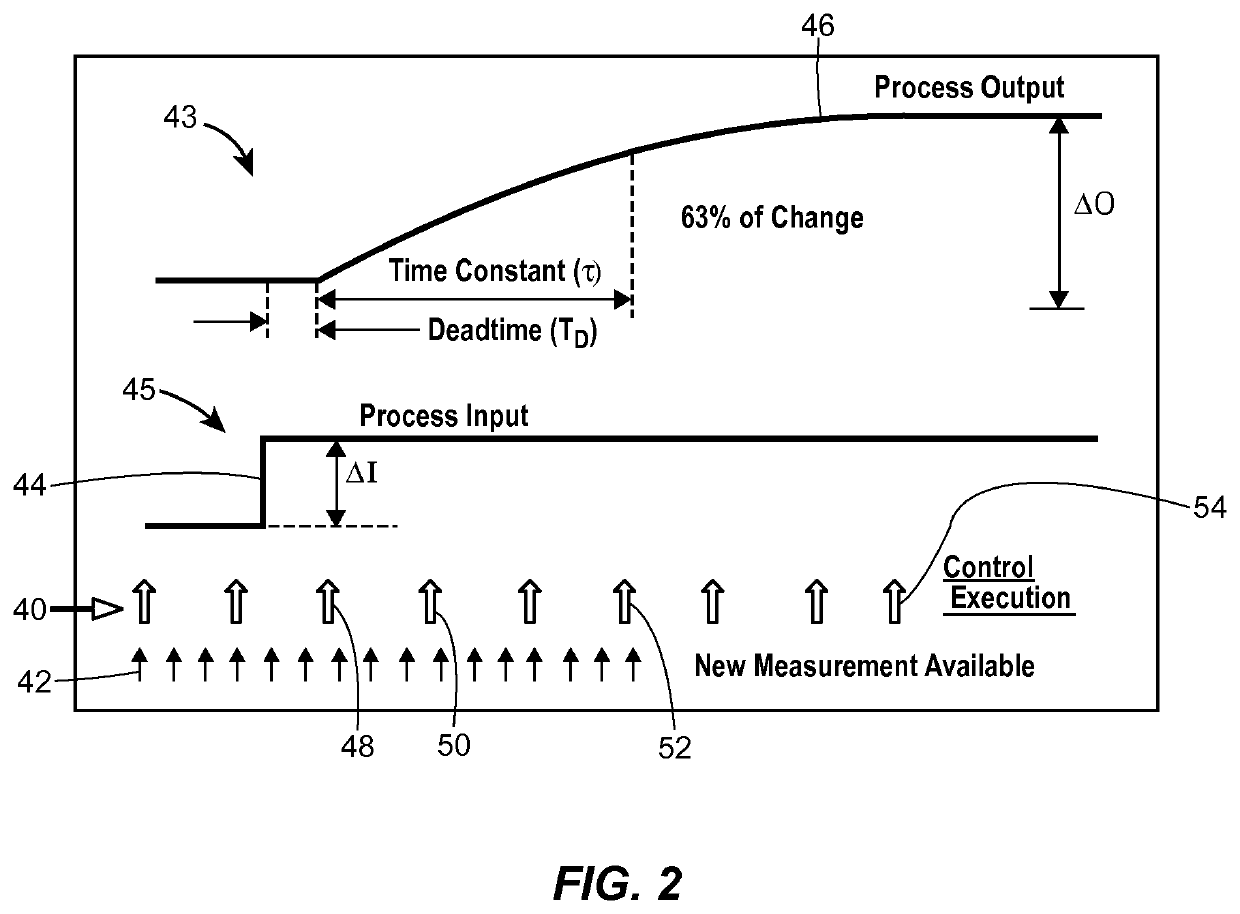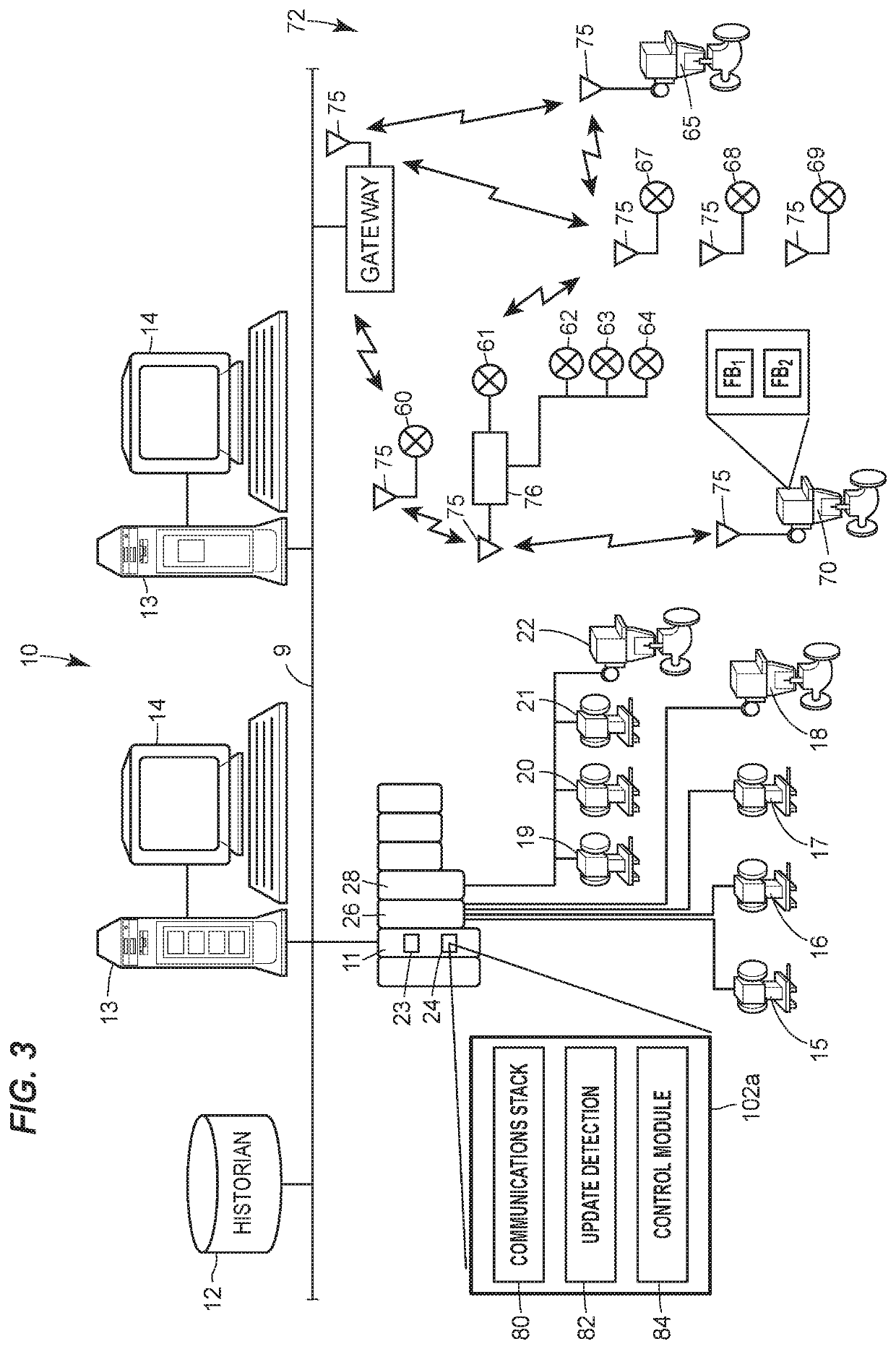Reducing controller updates in a control loop
a controller and update technology, applied in the field of implementing control in a control loop, can solve the problems of reducing the efficiency and/or profitability of the process control system, controllers, and compromising the integrity of communications between one or more field devices, and achieve the effect of improving the control performance of pid controllers
- Summary
- Abstract
- Description
- Claims
- Application Information
AI Technical Summary
Benefits of technology
Problems solved by technology
Method used
Image
Examples
Embodiment Construction
[0032]A control technique enables a controller to communicate or send control signals to a controlled device of a process, such as a valve actuator, in a non-periodic, wireless, slow, significantly delayed or otherwise non-synchronous manner, to reduce the number of actuator moves effectuated by the actuator while still providing robust control performance. As such, the control technique implements a control methodology that drives an actuator or other controlled device in a manner that reduces the power consumption of the controlled device, reduces frequent changes of the controlled device that result in a “hunting” phenomena that frequently occurs in control loops that experience significant noise or process disturbances, and reduces communication loading in communication devices within a wireless network that is used to implement a control loop, such as in wireless gateway devices.
[0033]In particular, a control communications block within a control loop operates to send newly cre...
PUM
 Login to View More
Login to View More Abstract
Description
Claims
Application Information
 Login to View More
Login to View More - R&D
- Intellectual Property
- Life Sciences
- Materials
- Tech Scout
- Unparalleled Data Quality
- Higher Quality Content
- 60% Fewer Hallucinations
Browse by: Latest US Patents, China's latest patents, Technical Efficacy Thesaurus, Application Domain, Technology Topic, Popular Technical Reports.
© 2025 PatSnap. All rights reserved.Legal|Privacy policy|Modern Slavery Act Transparency Statement|Sitemap|About US| Contact US: help@patsnap.com



